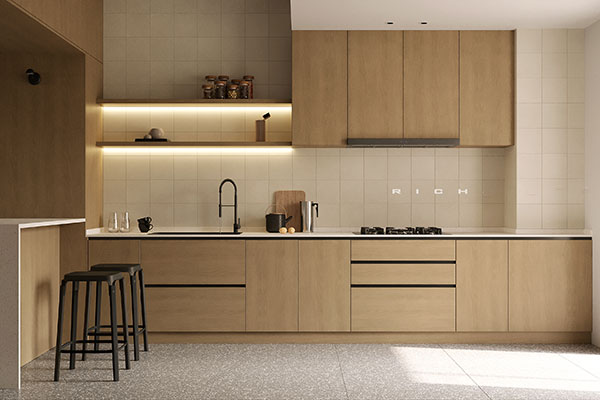By choosing high-quality kitchen cabinets, you can expect a range of benefits that go beyond mere aesthetics. Functionality is a key consideration when it comes to kitchen cabinets, and high-quality options deliver in this aspect. Investing in high-quality cabinets not only enhances your daily cooking and storage experience but also adds long-term value to your home.
What are the main characteristics of high-quality kitchen cabinets? Here are 5 points we summarized in list for your reference. Hope it can help.
1. All-plywood construction
Plywood kitchen cabinets offer a combination of strength, durability, moisture resistance, and versatility, making them a popular choice for high-quality cabinetry.
A. Strength and Durability: Plywood is known for its strength and durability. It is constructed by layering thin sheets of wood veneer together with adhesive, creating a layered structure that is more resistant to warping, cracking, and splitting compared to solid wood or particleboard. This makes plywood cabinets highly durable and long-lasting.
B. Stability: Plywood has excellent dimensional stability, meaning it is less prone to expansion and contraction due to changes in temperature and humidity. This stability helps prevent issues such as warping or sagging, ensuring that your cabinets maintain their structural integrity over time.
C. Resistance to Moisture: Plywood has natural resistance to moisture, especially when properly sealed or finished. This makes it a suitable material for kitchen cabinets, where exposure to water and humidity is common. Plywood cabinets are less likely to swell, warp, or develop mold or mildew compared to cabinets made from particleboard or MDF.
D. Weight-bearing Capacity: Plywood has a high weight-bearing capacity, making it suitable for supporting heavy countertop materials, appliances, and storage items. It provides a solid base for mounting hardware, such as hinges and drawer slides, ensuring smooth and reliable operation.
E. Versatility: Plywood is available in various thicknesses and grades, allowing for versatility in cabinet design and customization. It can be easily cut, shaped, and joined to create cabinets of different styles and sizes. Additionally, plywood can be veneered or finished with a wide range of decorative laminates, paints, or stains, providing flexibility in achieving different aesthetic looks.
F. Cost-Effectiveness: Plywood is generally more affordable than solid wood, making it a cost-effective option for kitchen cabinets. It offers many of the same benefits as solid wood, but at a lower price point.
It's worth noting that the quality of plywood can vary based on factors such as the wood species used, the number of layers, and the manufacturing process. Higher-grade plywood with thicker veneers and better adhesives will offer superior performance and durability. When selecting plywood cabinets, opt for those made from high-quality plywood from reputable manufacturers or suppliers to ensure the best results

2. Soft-close hinges
Soft-close hinges play a significant role in enhancing the functionality, convenience, and longevity of kitchen cabinets.
Advantage of using high-quality soft-close hinges:
1, Enhanced Durability: High-quality soft-close hinges can withstand frequent use and repetitive opening and closing without losing their effectiveness or wearing out prematurely.
2, Noise Reduction: High-quality soft-close hinges excel at reducing noise in the kitchen.
3, Reliable Soft-Close Functionality: Soft-close hinges ensure a controlled and gradual closing motion for windows. When you release the window sash, the soft-close mechanism engages and slows down the closing speed, preventing the window from slamming shut.
4, Safety: The controlled closing action minimizes the potential for fingers, hands, or other objects being caught or injured by a rapidly closing window. This is particularly important for households with children or pets.
5, Protection of Window Frames: Soft-close hinges help protect the integrity of window frames and sashes. By preventing forceful impacts when closing, they reduce wear and tear on the frame and components. This can extend the lifespan of the windows and minimize the need for repairs or replacements.
6, Convenience and Ease of Use: Soft-close hinges make opening and closing windows effortless.
Inferior cabinet hinges can cause doors to be uneven, as well loose and stiff. Some low-end hinges will sometimes not make cabinet doors close.
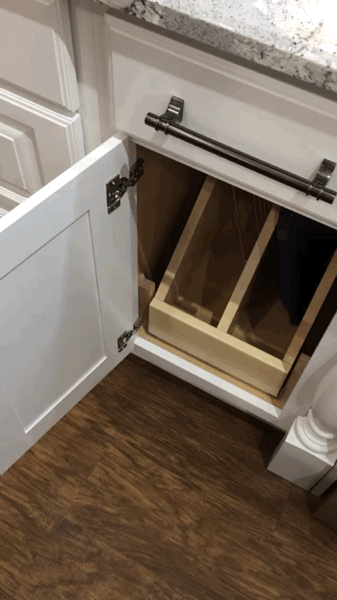

3. Toekick
The toekick, also known as a toe space or kick space, is the recessed area at the bottom of kitchen cabinets, typically located at the floor level.
A good toekick should have these features:
A. Ergonomics: The toekick provides a comfortable space for your feet when you're standing in front of the countertop or working at the kitchen sink. It allows you to stand closer to the cabinets without your toes hitting the base of the cabinets, improving your overall posture and reducing strain on your legs and back. This ergonomic design feature enhances user comfort and reduces fatigue during prolonged periods of standing and working in the kitchen.
B. Toe Protection: The toekick acts as a protective barrier, preventing accidental toe or foot injuries from contact with the sharp edges or corners of the cabinet base. It creates a safe zone that minimizes the risk of stubbing toes or accidentally kicking the cabinet while moving around the kitchen. This is particularly important in households with children or elderly individuals who may be more prone to accidents.
C. Cleanliness and Maintenance: The toekick creates a recessed area that helps keep the underside of the cabinets clean and free from debris. It acts as a barrier to prevent dust, dirt, and food particles from accumulating in hard-to-reach areas. The accessibility of the toekick also makes it easier to clean and maintain the floor beneath the cabinets.
D. Aesthetics: The toekick contributes to the overall visual appeal and aesthetics of kitchen cabinets. It provides a finished and polished look by concealing the structural base of the cabinets and creating a seamless transition between the cabinets and the floor.
E. HVAC Integration: In some cases, the toekick can accommodate the installation of heating, ventilation, and air conditioning (HVAC) systems. By incorporating vents or grilles into the toekick design, it allows for efficient air circulation and distribution throughout the kitchen space. This integration helps maintain a comfortable indoor environment and ensures proper ventilation.
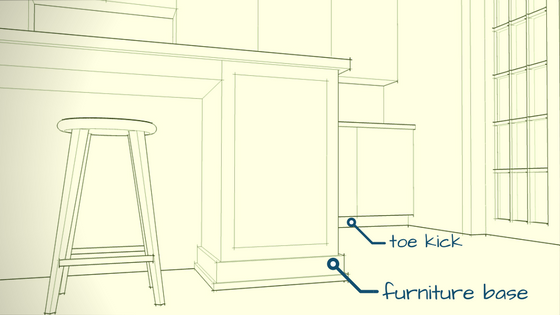
4. Undermount, steel, soft-close drawer glides
Drawers glides or slides offer several advantages that contribute to the overall functionality, durability, and user experience of kitchen cabinets.
Smooth and Quiet Operation: The steel construction of these glides ensures strength and stability, allowing for the smooth movement of the drawer without any noticeable wobbling or sticking.
1, Space Optimization: Undermount drawer glides maximize the usable space within the drawer itself. Unlike traditional side-mounted drawer glides, which reduce the width of the drawer by occupying space on the sides, undermount glides are concealed beneath the drawer, allowing for full utilization of the drawer's interior.
2, Enhanced Aesthetics: Since undermount drawer glides are hidden from view when the drawer is closed, they provide a cleaner and more streamlined appearance to the cabinets. The absence of visible hardware or protrusions also makes it easier to clean the drawers and maintain a tidy and visually appealing kitchen.
3, Durability and Longevity: Steel construction ensures the strength and durability of the drawer glides. Steel is highly resistant to wear and tear, ensuring that the glides can withstand the regular use and heavy loads typically encountered in kitchen cabinets.
4, Easy Installation and Adjustment: Undermount drawer glides are designed to be user-friendly when it comes to installation and adjustment. They typically come with clear instructions and are straightforward to install, making them accessible for both DIY enthusiasts and professionals.
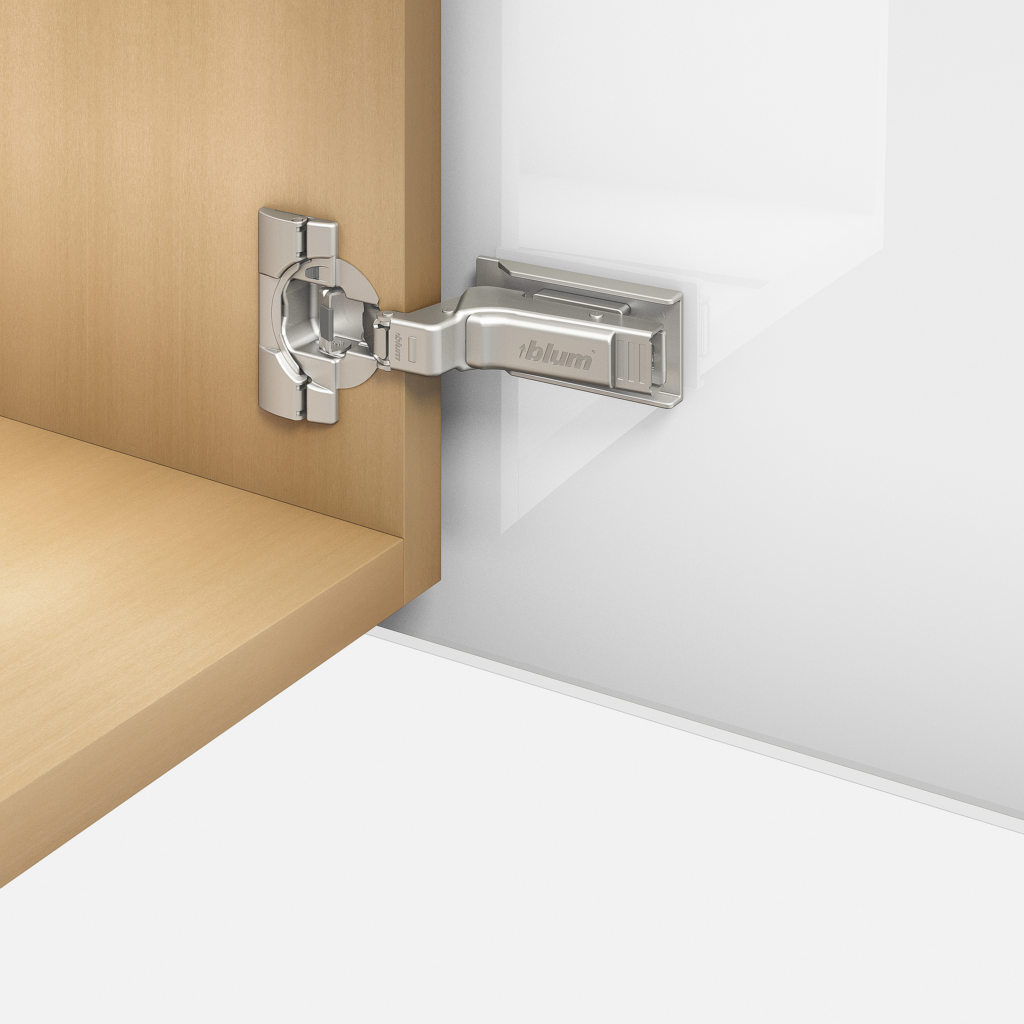
5. Trial assembling work in the factory
For residential project or renovation project, buyer prefer to received assemble kitchen cabinets.
The pros and cons of fully assembled in the factory kitchen cabinets:
- Strong and durable
- Construction methods include joining wood parts with dovetail joints, power fasteners, hot and cold glue, and other effective industrial techniques.
- Kitchen cabinets arrive assembled and only need to be installed directly.
- High shipping cost.
Considering to help customers save transportation costs, we can do trial assembling work in our factory. It means kitchen cabinets are shipped in parts including the cabinet and face frame, drawers and drawer glides, doors, inserts, and hardware. Less expensive and lower shipping cost because the components of the cabinet are packed flat. You or you can hire someone (like the contractor) will have to assemble them in local. (Most of our regular clients pick this way)
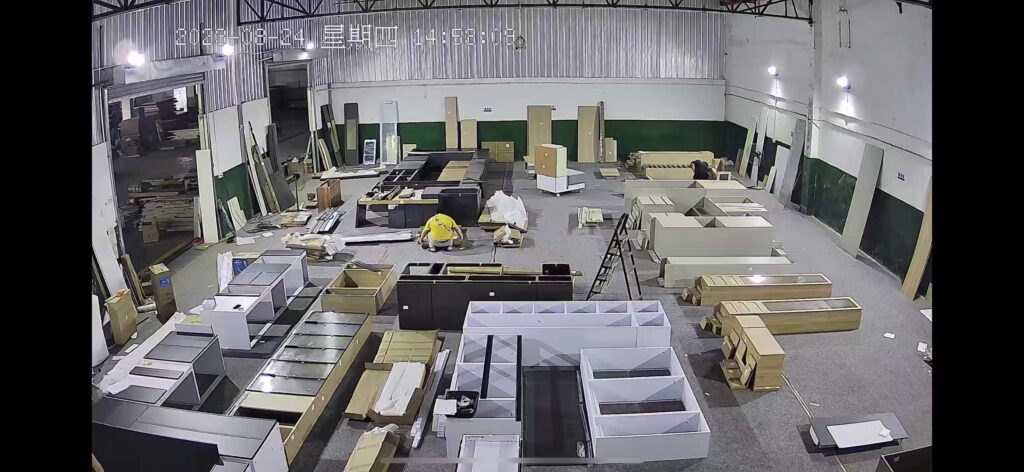

In conclusion, selecting high-quality kitchen cabinets is a critical aspect of creating a functional, durable, and visually appealing kitchen space. By following a few key principles, homeowners can make informed decisions and choose cabinets that meet their needs and exceed their expectations.



